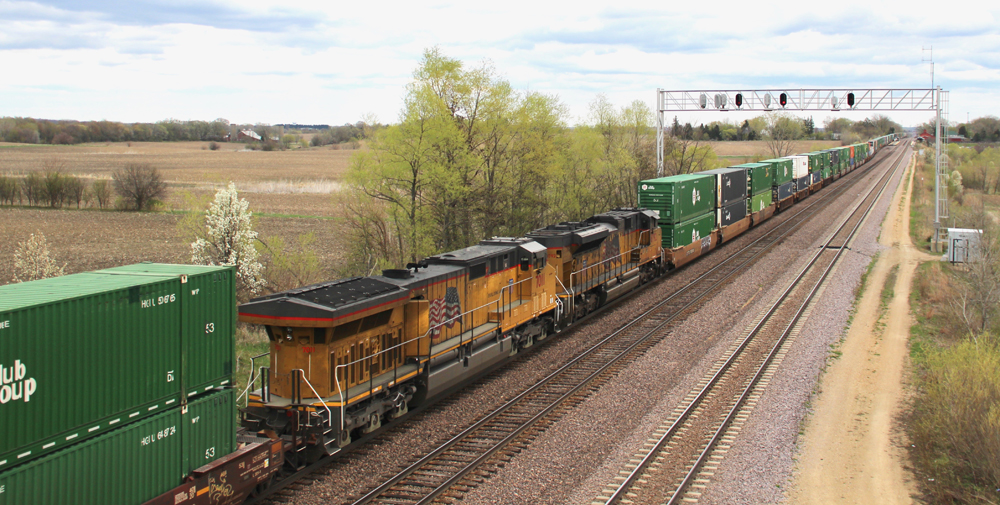
WASHINGTON – The long-awaited National Academies of Sciences, Engineering, and Medicine report on the impact of long freight trains will be released next week.
“Over the last two decades, railroad companies have been operating increasingly longer trains to reduce the number of crews, locomotives, and overall number of trains needed,” the academies said today. “In 2021, 25% of all trains exceeded 7,500 feet (1.5 miles) in length. Several high-profile derailments and reports of daily blocked crossings in communities across the U.S. have raised concerns about the impacts of longer trains.”
As part of the Bipartisan Infrastructure Law, Congress requested the study to evaluate issues around the safety of long freight trains, risk management practices and railroad operations, crew workload and training, blocked grade crossings, and conflicts with Amtrak passenger trains.
The Class I railroad trend of moving tonnage on fewer but longer trains has become a controversial issue. The practice has prompted significant layoffs of engineers and conductors, forced motorists to wait longer at crossings, and raised safety concerns.
Rail labor leaders have called for a 7,500-foot cap on train length, a figure that was mirrored in the rail safety legislation that was introduced in Congress after Norfolk Southern’s Feb. 3, 2023, hazardous materials derailment in East Palestine, Ohio.
The Association of American Railroads insists that long trains are safe and that there’s no need for a limit on train length.
Last year the Federal Railroad Administration issued a train length advisory that urged railroads to take steps to address the complexities of operating long trains. It was issued after three recent derailments involving trains with more than 200 cars, a length of 12,250 feet or more, and a weight over 17,000 tons.
The National Academies report will be released at 10 a.m. on Tuesday.














It might be better to reframe the issue with a regulation limiting trains to just less than the length of the shortest usable siding between origin and destination. If that turns out to still be ‘too long’, adjust from there.
Should be an interesting read. I agree with Mr Thomas though. Lets see who was involved in this study.
I presume that part of the published study will be the names and backgrounds of the writers, plus a detailed description of their guidelines and benchmarks. Are any fully familiar with railroads and their operations? Who is vetting their conclusions and recommendations?
I believe it was last year that a CSX train had stopped in a suburb of Cincinnati blocking all crossings. A fire broke out at a home that was across the tracks from the local fire department. The fire trucks had to get on the expressway and exit the freeway after crossing over the tracks to get to the fire. I don’t remember the results.
I just know that if a member of my family has a life threatening emergency, and a train blocking all the crossings prevents them getting immediate emergency care, I’m going for the jugular.
A breakdown or derailment would cut a town or a small city in two, for hours.
Hopefully any fire/ rescue department on a main rail line has arrangements for coverage if multiple crossings are blocked. My town does, as we’re on county 911.